Homemade Pasta — Once you have tried homemade pasta, there is no way back. Freshly made pasta is totally worth it. It is far more delicious, cheaper and healthier than store-bought pasta. With or without a pasta maker, you can easily recreate this recipe at home!
Several years ago, I made my first ever homemade pasta. I was (and still am) very interested in homemade food from scratch. As a result, I wished for a pasta maker for Christmas, which is affordable and good. Then I started experimenting with different kinds of pasta and dough with the help of other food blogs and YouTube tutorials. It was really fun. However, they did not turn out the way I wanted, or the pasta did not look anywhere similar to those tutorials. Thereafter, life caught up, and I took a break from making fresh pasta.
One day, I took out my trusty pasta maker again. I was determined to find the perfect pasta for my family and I because we just love homemade food from scratch. So I started making homemade pasta from all over again. I finally found the perfect recipe for pasta (in my family’s opinion).
This basic recipe only requires you some common ingredients and some patience to make. Even though it does require more effort and time, freshly made pasta is totally worth it. It is far more delicious, cheaper (at least in Germany) and healthier than store-bought fresh/ dry pasta. Once you have tried homemade pasta, there is no way back. Whenever I make these fresh noodles (my family’s lucky day), it will be all gone. No leftovers and in fact, not even enough to fill those tummies.
If you follow my instructions carefully, you will hardly fail this recipe. There are many ways out there to make your own noodles. There are many tutorials available. However, I personally think that this is the easiest and fastest way to make these delicious noodles.
Do not worry, you do not need a pasta maker for this recipe if you do not have one. If you love pasta making, I would definitely highly recommend investing in one. I am going to show you two easy methods (with and without pasta maker) to make this delicious homemade pasta recipe at the ease of your own kitchen. This is also the basic recipe for all my other upcoming pasta related recipes.
Tips on making homemade pasta
Durum Wheat Semolina: Semolina is a common type of wheat used to make pasta. In German, it is called Hartweizengrieß. It has coarse texture and its high gluten content is what holds up this pasta shape, making the pasta easier to work with. The results taste different from the regular “00” pasta flour. I usually use 1:1 ratio of semolina to all-purpose flour. For example, I always use 150g semolina to 150g flour.
You can change the ratio as you wish, for example 100% semolina pasta or 3:4 or 1:4 ratio. However, through my experiments my family likes 1:1 ratio the best in terms of taste, texture and the ease to work with. Just try out different ratios and see what is your favourite combination. Your pasta, your way.
All-purpose flour: When the pasta dough contains more than 50% of semolina, the dough becomes drier and less soft to work with. Plain flour just give the pasta a softer touch and a chewy texture. I personally find that too much flour in this case (more than 50%) will result in the pasta from turn too sticky and the pasta is soggier. It is more difficult for the sauce to stick onto the pasta.
In addition, you can also use other types of flour of your choice. For example, I have tried using organic whole grain spelt flour with this recipe, and it worked out perfectly as well.
Eggs: You can skip this ingredient and use only water for pasta for an egg free pasta. However, if you can eat eggs, pasta with eggs just taste differently. Eggs are not just a binding agent, they also add good flavours to your very own homemade pasta. I would not recommend adding additional eggs to the dough, if it is too dry because if there is too much fluid in the dough it will turn sticky.
Olive Oil: This is optional. However, olive oil allows the dough to be roll out easier, if you are doing it with your hands. It also adds a subtle flavour to your homemade noodles.
Water: Add water only when it is needed. This means that if the other ingredients do not bind, the dough is dry and flaky. In this case, only add very little water and try kneading the dough again. Repeat step as needed. Be really careful not to add too much water to the dough, as it will turn sticky. The trick is to add little water by little.
How to make homemade pasta
In a mixing bowl, add all-purpose flour (flour of your choice), semolina, salt, olive oil and eggs. Mix the ingredients with your hands or with an electric hand mixer. It depends on the size of the eggs you are using, you may or may not need to add water to the dough. If the dough is too dry (when the ingredients do not mix), add a little water to the dough. It is really important to add the water little by little, so that you can get a perfect dough, not a batter. Add enough water until you get a non-sticky dough.
Wrap your dough in a cling wrap to prevent the pasta dough from drying out, and let the dough rest for at least 30 minutes at room temperature. If you are not using it right away, then keep up dough in the refrigerator for maximum 2 days. If not, the dough will change colour. Once your dough has rested, spread some flour onto your working top. Take the dough out of the cling wrap and cut a small piece of the dough. Wrap the rest of the dough again. It is easier to work with small pieces of dough.
Without Pasta Maker
If you do not own a pasta maker, spread some flour on a rolling pin and roll out your pasta dough until you reach your desired thickness of your pasta. Try to achieve a rectangle shape of pasta dough, if you could.
Do not worry if your pasta is not perfectly shaped, you can either trim it or just leave it as it is. If not, it is still very delicious. Thereafter, you can either fold the pasta or roll your flattened pasta dough and cut the pasta into strips. Roll out the pasta strips, and you will get your pasta. After which, place your pasta one by one separately on the working top and dry them. Alternatively, you can hang them over a pasta dryer.
With Pasta Maker
If you own a pasta maker (which I highly recommend if you are going to make pasta often), spread some flour on a rolling pin and roll out your pasta dough until it could fit the largest gap (usually the first level) of the pasta maker. Try to achieve a rectangle shape of pasta dough, if you could. If not, it is also delicious. Thereafter, adjust the level of the pasta maker to the second level and then roll out the pasta. Repeat the process until you reach your desired thickness. Do not worry if your pasta is not perfectly shaped, you can either trim it or just leave it as it is. Cut your pasta either by hand (see number 5.) or, in my case, with my pasta maker. After which, dry your pasta as mentioned.
This recipe goes well with
How to serve homemade pasta
In a pot of salted boiling water, cook your delicious homemade pasta for about 3 minutes, until the pasta rise up to the water surface. Thereafter, take them out and immediately serve with your favourite pasta sauce, this is to prevent the noodles from sticking. Enjoy with some Parmesan cheese afterwards!
How to store homemade pasta
I would recommend always drying your pasta first before storing, even before you freeze them. This would prevent the pasta from sticking to each other. I have tried freezing the noodles before drying them, it did not work out by cooking. The pasta sticks to each other and I got a lump of pasta after cooking.
You can store the dried pasta in the refrigerator for one to two days or in the freezer for a few months. Just simply take them out of the freezer and the noodles in salted boiling water for about 3 minutes as well.
I used to make pasta in a big batch. However, now I only do them in small batches and only when I need them. As a result, we will have some fresh pasta. It is very easy to make fresh pasta from scratch, I would just plan ahead.
Have you tried this recipe? If yes, I hope you enjoy the recipe as much as my family does. Show me and tag me #chenguins on social media, so that I can see your recreation as well.
Is this your first time making pasta? What is your favourite pasta recipe? Tell me in the comment section below!
Until next time & guten Appetit!
Greetings from the Black Forest,
Pia
Watch how to make this recipe
Print this recipe
Best Simple Homemade Pasta Recipe (With and Without Pasta Maker)
Equipment
- Pasta Maker (optional)
Ingredients you need
- 150 g Durum Wheat Semolina Hartweizengrieß in German
- 150 g All-Purpose Flour or flour of your choice
- 2 Eggs
- 0.5 tsp Salt
- 2 tbsp Olive Oil optional
- Water The amount of water depends on the texture of the dough.
Directions
- In a mixing bowl, add flour, semolina, salt, olive oil and eggs.
- Mix the ingredients with your hands or with an electric hand mixer. It depends on the size of the eggs you are using, you may or may not need to add water to the dough. If the dough is too dry (when the ingredients do not mix), add a little water to the dough. It is really important to add the water little by little, so that you can get a perfect dough, not a batter. Add enough water until you get a non-sticky dough.
- Wrap your dough in a cling wrap to prevent the pasta dough from drying out and let the dough rest for about 30 minutes.
- Once your dough has rested, spread some flour onto your working top. Take the dough out of the cling wrap and cut a small piece of the dough. Wrap the rest of the dough again. It is easier to work with small pieces of dough
Without Pasta Maker
- If you do not own a pasta maker, spread some flour on a rolling pin and roll out your pasta dough until you reach the desired thickness of your pasta. Try to achieve a rectangle shape of pasta dough, if you could. Do not worry if your pasta is not perfectly shaped, you can either trim it or just leave it as it is. Thereafter, you can either fold the pasta or roll your flattened pasta dough and cut the pasta into strips. Roll out the pasta rolls, and you will get your pasta. After which, place your pasta one by one separately on the working top and dry them. Alternatively, you can hang them over a pasta dryer. You can store the dried pasta in the refrigerator for one to two days or in the freezer for a few months. I would highly recommend drying the pasta before freezing them to prevent the pasta from sticking to each other.
With Pasta Maker
- If you own a pasta maker (which I highly recommend if you are going to make pasta often), spread some flour on a rolling pin and roll out your pasta dough until it could fit the largest gap (usually the first level) of the pasta maker. Try to achieve a rectangle shape of pasta dough, if you could. Do not worry if your pasta is not perfectly shaped, you can either trim it or just leave it as it is. Thereafter, adjust the level of the pasta maker to the second level and then roll out the pasta. Repeat the process until you reach your desired thickness. Cut your pasta either by hand (see previous point.) or, in my case, with my pasta maker. After which, place your pasta one by one separately on the working top and dry them. Alternatively, you can hang them over a pasta dryer. You can store the dried pasta in the refrigerator for one to two days or in the freezer for a few months. I would highly recommend drying the pasta before freezing them to prevent the pasta from sticking to each other.
- In a pot of salted boiling water, cook your delicious homemade pasta for about 3 minutes.
- Serve with your favourite pasta sauce, Parmesan cheese and enjoy!

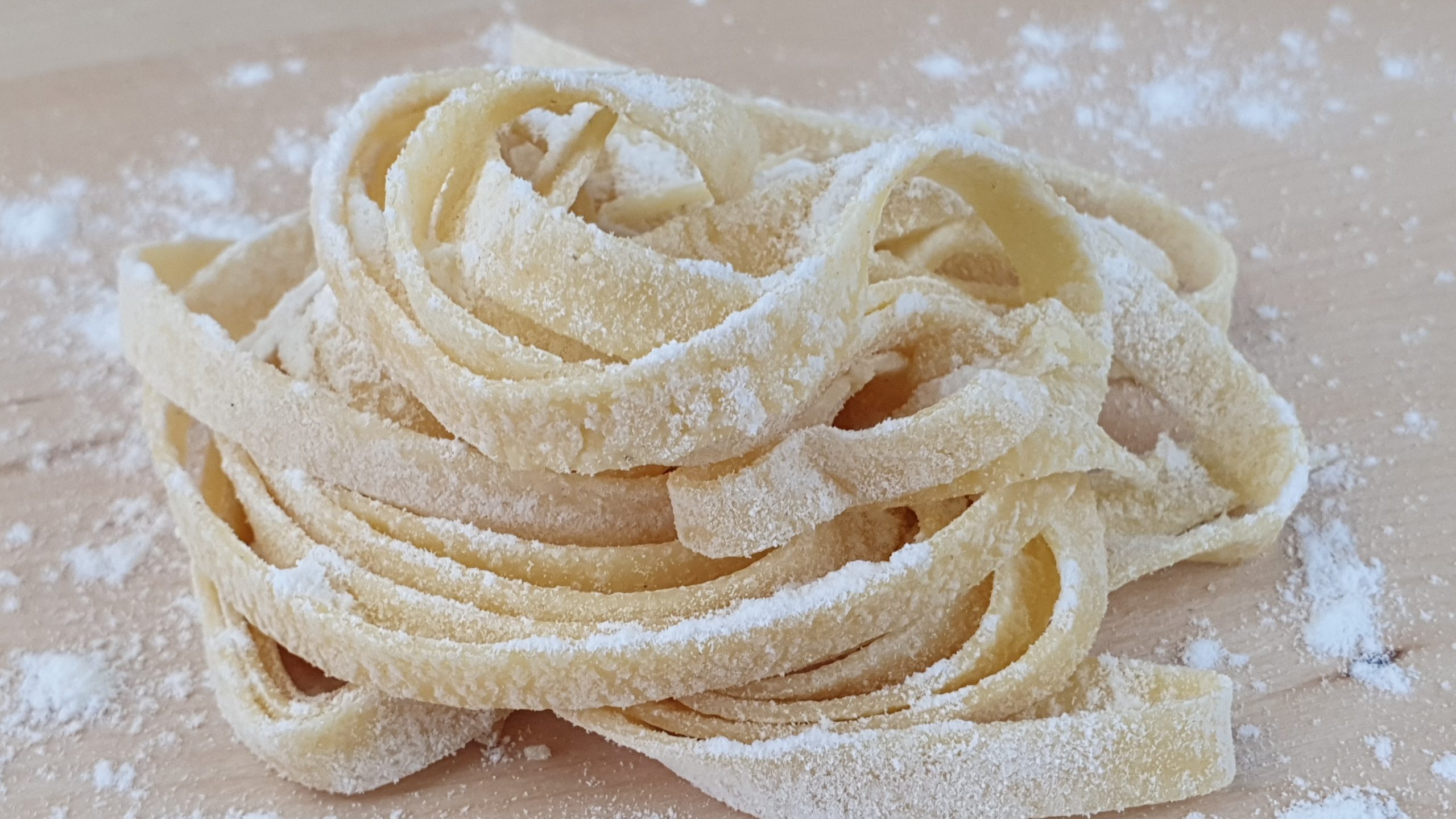


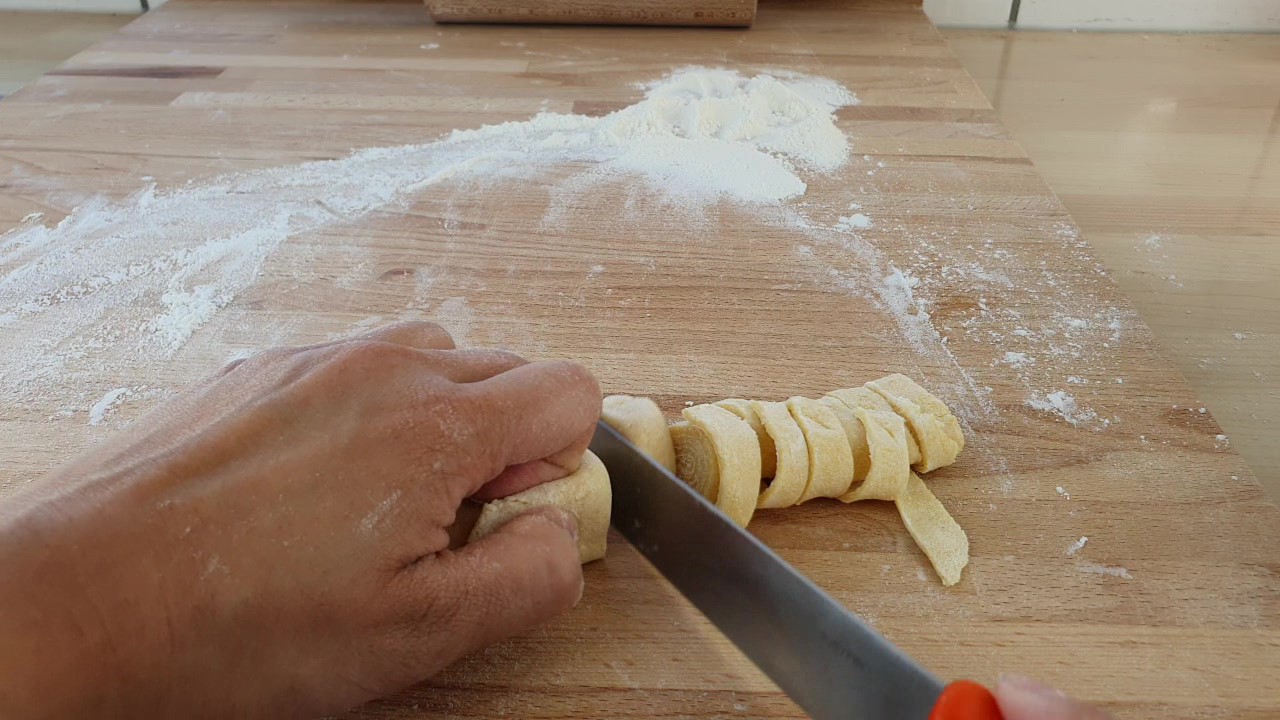



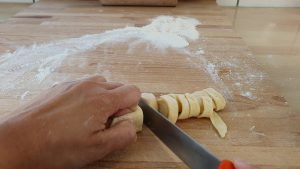
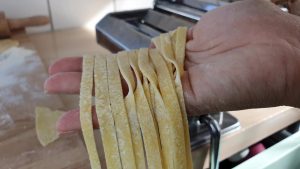
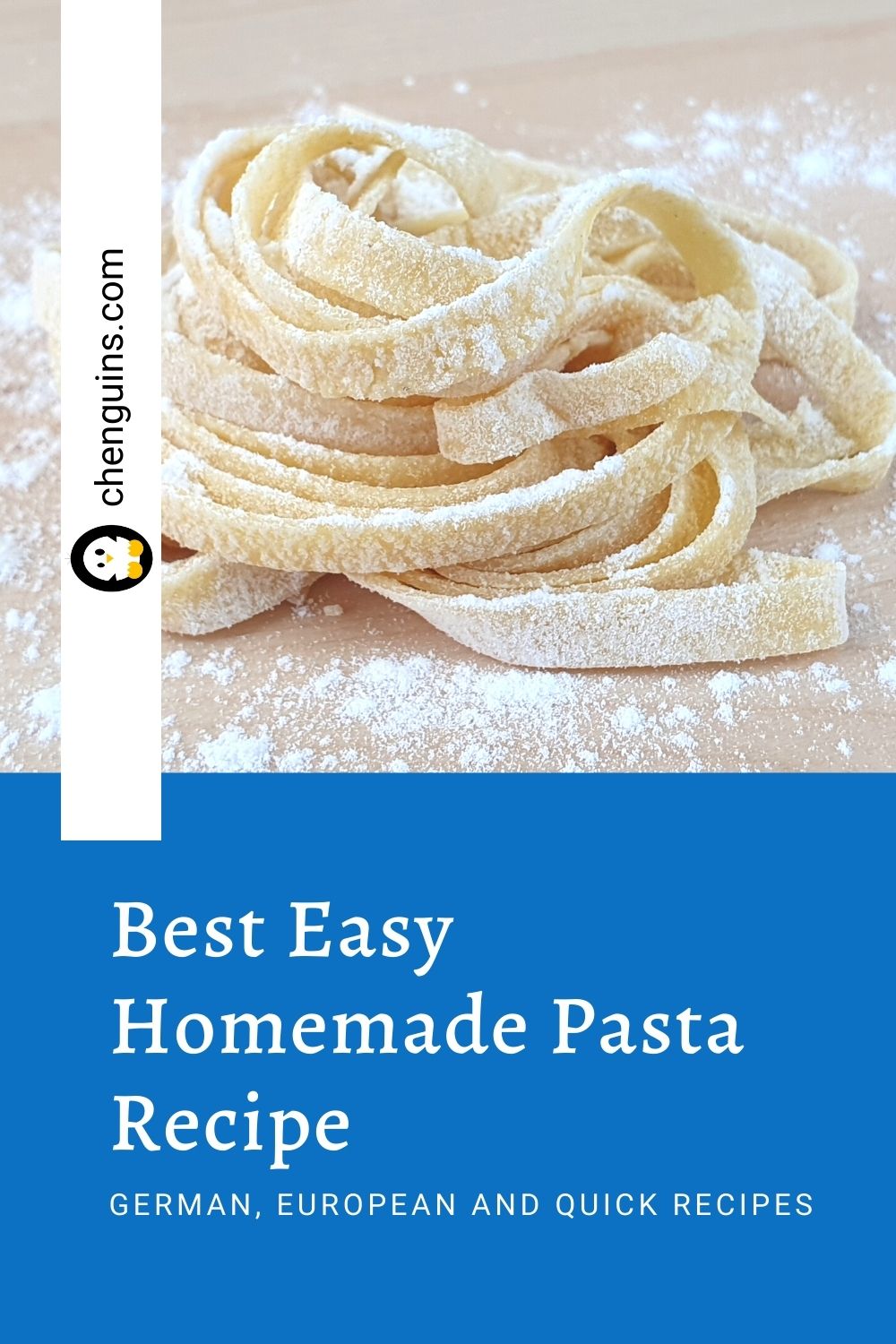


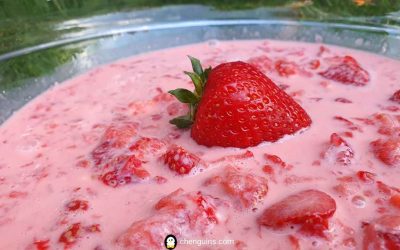
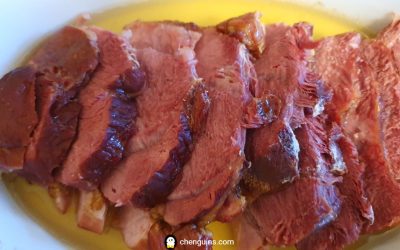

0 Comments
Trackbacks/Pingbacks